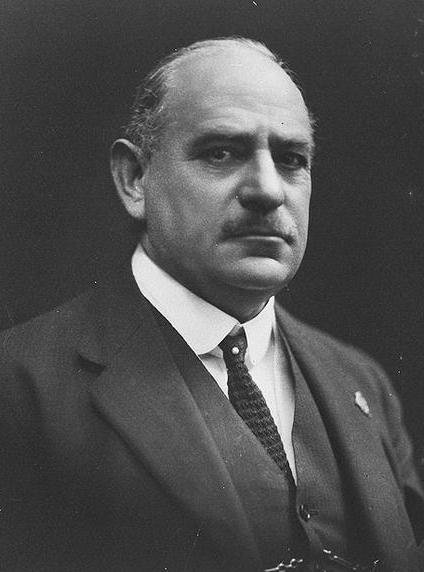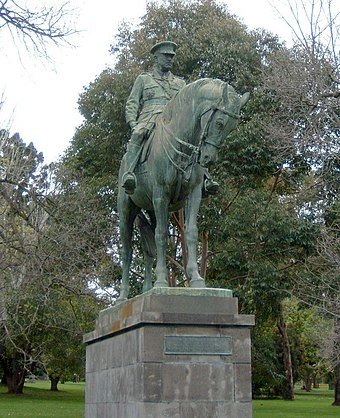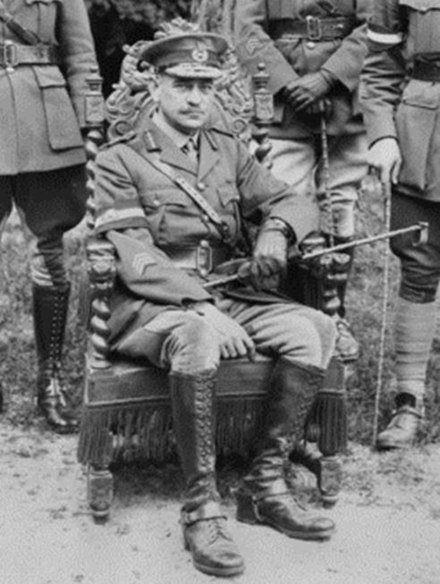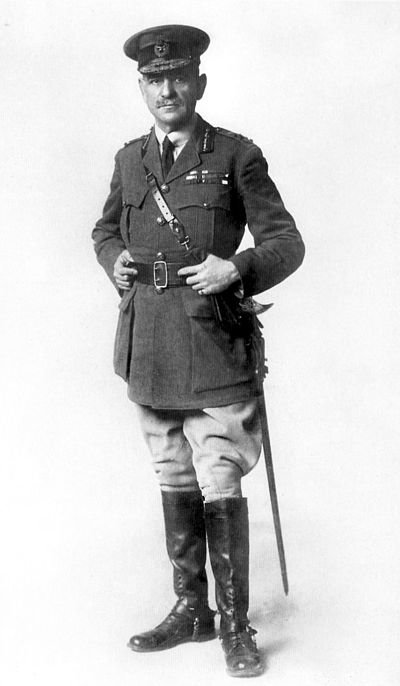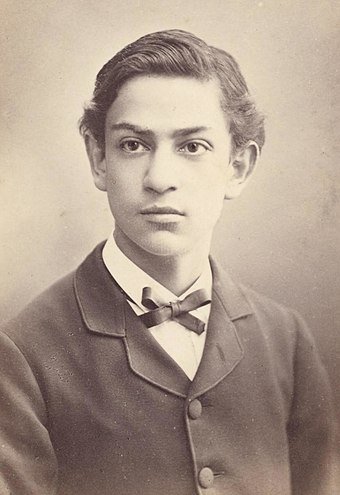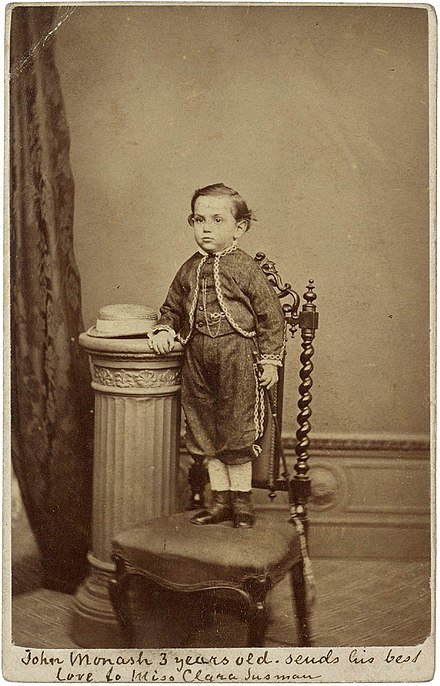British Heritage
Remember, Cherish, Learn.
beta
John Monash
Contribution of General Sir John Monash to British Heritage.
General Sir John Monash, a civil engineer and an Australian military commander of the First World War, made significant contributions to British Heritage. Through his exceptional leadership and strategic acumen, he played a pivotal role in the Allied victory during the war and is regarded as one of the best Allied generals of the conflict. His legacy not only influenced Australian military thinking but also left a lasting impact on British military tactics and operations.
John Monash was born on 27 June 1865 in West Melbourne, Victoria, Australia, to Jewish parents who emigrated from Prussian province. He excelled academically, graduating from the University of Melbourne with degrees in engineering, arts, and law. As a civil engineer, Monash was instrumental in introducing reinforced concrete to Australian engineering practices, showcasing his innovative and progressive mindset.
When the First World War erupted in 1914, Monash joined the Australian Imperial Force as a full-time army officer. Despite facing initial opposition due to his German and Jewish ancestry, he was appointed as the commander of the 4th Infantry Brigade and sent to Egypt. In 1916, Monash was transferred to the Western Front, where he demonstrated outstanding leadership and earned promotions to major general and lieutenant general.
As commander of the Australian 3rd Division, Monash trained his troops with meticulous attention to detail and integrated various arms of the forces effectively. He emphasized the safety and well-being of his soldiers, promoting a philosophy of "collective individualism." Monash's approach to planning and executing operations, along with his efficient use of tanks, aircraft, artillery, and infantry, revolutionized military tactics and set new standards for operational success.
Monash led the Australian Corps to victory in several significant battles, such as the Battle of Hamel, the Battle of Amiens, and the recapture of Villers-Bretonneux. He demonstrated exceptional leadership during the Battle of the Hindenburg Line, breaching the heavily fortified German defensive system. These successes contributed significantly to the eventual defeat of the Germans and the end of the war.
Monash received numerous honors and awards for his exceptional service during the war. He was appointed as a Knight Commander of the Order of the Bath, a Knight Grand Cross of the Order of St. Michael and St. George, and received foreign awards from France, Belgium, and the United States. The Australian Government also promoted him to the full rank of general for his long and distinguished service.
After the war, Monash returned to Australia and played key roles in various civilian positions, including heading the State Electricity Commission of Victoria and serving as vice-chancellor of the University of Melbourne. He was involved in organizing ANZAC Day observance and planning Melbourne's war memorial, the Shrine of Remembrance, showcasing his commitment to honoring the sacrifices of soldiers.
General Sir John Monash's legacy is far-reaching and enduring. He not only shaped Australian military thinking but also contributed significantly to British military practices. His innovative tactics and emphasis on planning and integration of all military arms set new standards for military operations. Monash's success also highlighted the diversity and multi-ethnic character of Australian society, promoting tolerance and inclusivity.
General Sir John Monash's contribution to British Heritage is characterized by his exceptional leadership during the First World War and his lasting impact on military tactics and operations. His strategic acumen and innovative approach to warfare earned him a place among the greatest Allied generals of the conflict. Beyond his military achievements, Monash's dedication to honoring the sacrifices of soldiers and his commitment to diversity and inclusivity in Australian society further solidify his legacy as a remarkable and influential figure in history.
Early Life and Career
John Monash was born on 27 June 1865 in West Melbourne, Victoria, Australia, to Jewish parents who emigrated from Prussian province. He excelled academically, graduating from the University of Melbourne with degrees in engineering, arts, and law. As a civil engineer, Monash was instrumental in introducing reinforced concrete to Australian engineering practices, showcasing his innovative and progressive mindset.
Military Leadership during World War I
When the First World War erupted in 1914, Monash joined the Australian Imperial Force as a full-time army officer. Despite facing initial opposition due to his German and Jewish ancestry, he was appointed as the commander of the 4th Infantry Brigade and sent to Egypt. In 1916, Monash was transferred to the Western Front, where he demonstrated outstanding leadership and earned promotions to major general and lieutenant general.
As commander of the Australian 3rd Division, Monash trained his troops with meticulous attention to detail and integrated various arms of the forces effectively. He emphasized the safety and well-being of his soldiers, promoting a philosophy of "collective individualism." Monash's approach to planning and executing operations, along with his efficient use of tanks, aircraft, artillery, and infantry, revolutionized military tactics and set new standards for operational success.
Key Battles and Achievements
Monash led the Australian Corps to victory in several significant battles, such as the Battle of Hamel, the Battle of Amiens, and the recapture of Villers-Bretonneux. He demonstrated exceptional leadership during the Battle of the Hindenburg Line, breaching the heavily fortified German defensive system. These successes contributed significantly to the eventual defeat of the Germans and the end of the war.
Honors and Recognition
Monash received numerous honors and awards for his exceptional service during the war. He was appointed as a Knight Commander of the Order of the Bath, a Knight Grand Cross of the Order of St. Michael and St. George, and received foreign awards from France, Belgium, and the United States. The Australian Government also promoted him to the full rank of general for his long and distinguished service.
Post-War Contributions
After the war, Monash returned to Australia and played key roles in various civilian positions, including heading the State Electricity Commission of Victoria and serving as vice-chancellor of the University of Melbourne. He was involved in organizing ANZAC Day observance and planning Melbourne's war memorial, the Shrine of Remembrance, showcasing his commitment to honoring the sacrifices of soldiers.
Legacy
General Sir John Monash's legacy is far-reaching and enduring. He not only shaped Australian military thinking but also contributed significantly to British military practices. His innovative tactics and emphasis on planning and integration of all military arms set new standards for military operations. Monash's success also highlighted the diversity and multi-ethnic character of Australian society, promoting tolerance and inclusivity.
Conclusion
General Sir John Monash's contribution to British Heritage is characterized by his exceptional leadership during the First World War and his lasting impact on military tactics and operations. His strategic acumen and innovative approach to warfare earned him a place among the greatest Allied generals of the conflict. Beyond his military achievements, Monash's dedication to honoring the sacrifices of soldiers and his commitment to diversity and inclusivity in Australian society further solidify his legacy as a remarkable and influential figure in history.
- John Monashen.wikipedia.org
